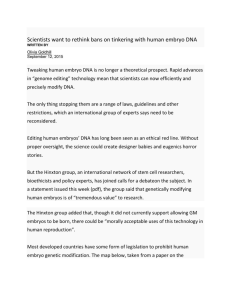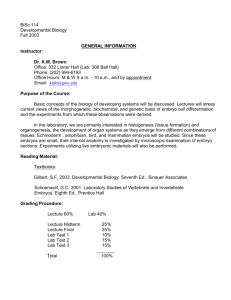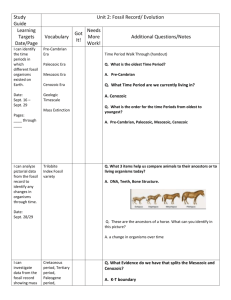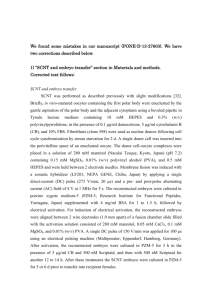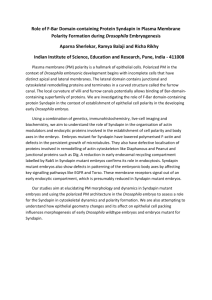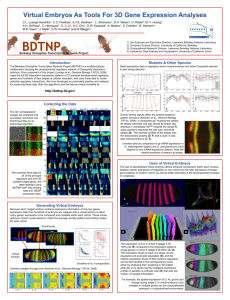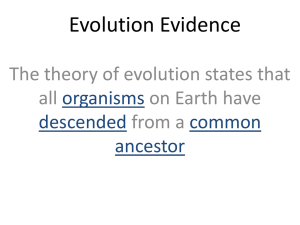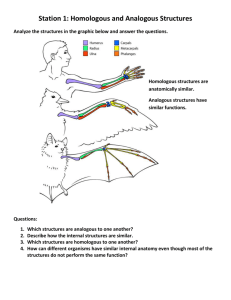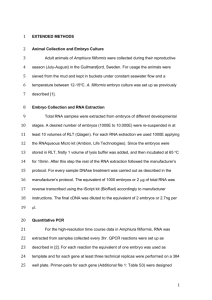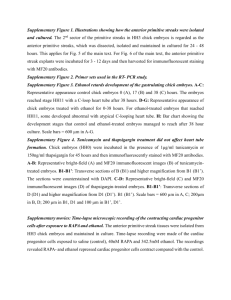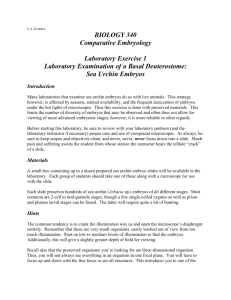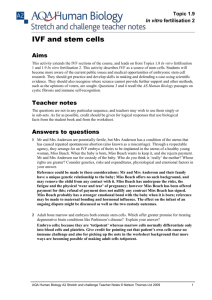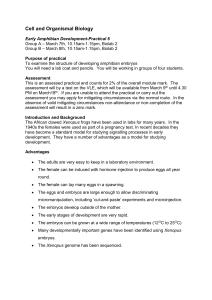Evidence of Evolution: Embryology
advertisement
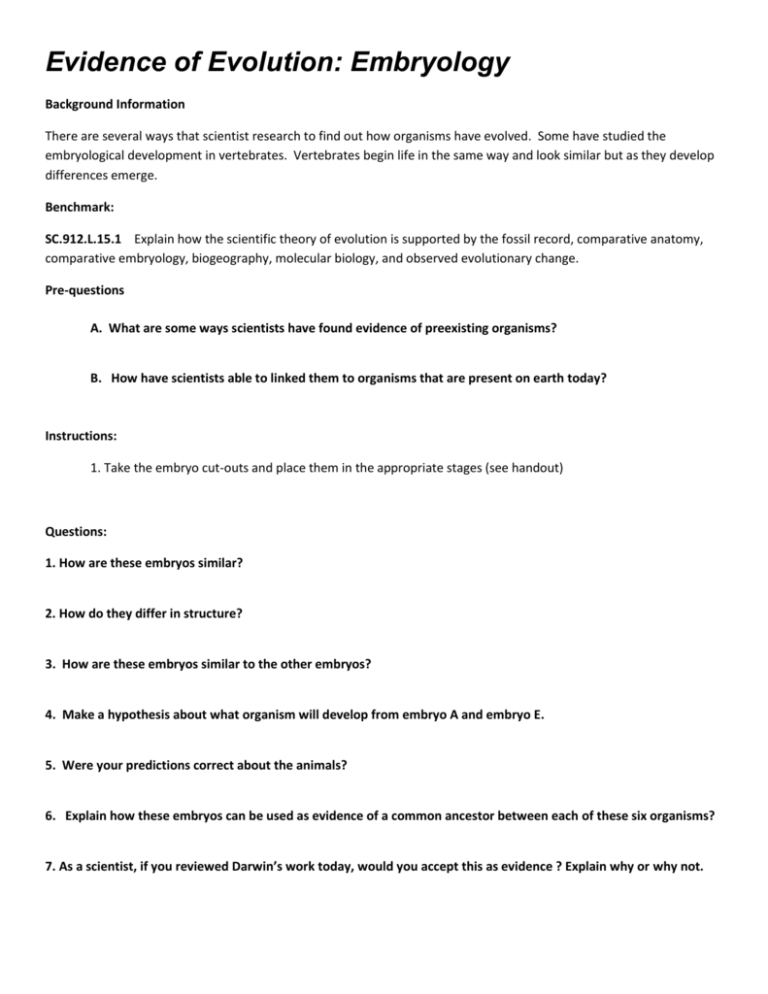
Evidence of Evolution: Embryology Background Information There are several ways that scientist research to find out how organisms have evolved. Some have studied the embryological development in vertebrates. Vertebrates begin life in the same way and look similar but as they develop differences emerge. Benchmark: SC.912.L.15.1 Explain how the scientific theory of evolution is supported by the fossil record, comparative anatomy, comparative embryology, biogeography, molecular biology, and observed evolutionary change. Pre-questions A. What are some ways scientists have found evidence of preexisting organisms? B. How have scientists able to linked them to organisms that are present on earth today? Instructions: 1. Take the embryo cut-outs and place them in the appropriate stages (see handout) Questions: 1. How are these embryos similar? 2. How do they differ in structure? 3. How are these embryos similar to the other embryos? 4. Make a hypothesis about what organism will develop from embryo A and embryo E. 5. Were your predictions correct about the animals? 6. Explain how these embryos can be used as evidence of a common ancestor between each of these six organisms? 7. As a scientist, if you reviewed Darwin’s work today, would you accept this as evidence ? Explain why or why not. Answers to Questions: Pre-questions A. What are some ways scientists have found evidence of preexisting organisms? Fossils, DNA, Analogous and Homologous structures B. How have scientists able to linked them to organisms that are present on earth today? By comparing the organism’s structures with the fossil structure. Comparing DNA with fossil DNA Q1. How are these embryos similar? They have long tails, large heads, eyes, notochord and pharyngeal gill slits. Q2. How do they differ in structure? Some have larger heads and bigger eyes. The bodies are thinner on the A and B embryos. Q3. How are these embryos similar to the other embryos? A and B have developed long narrow tails. Embryos C through F have noticeable limbs. C and D have large eyes. Q4. Make a hypothesis about what organism will develop from embryo A and embryo E. Accept reasonable predictions, student answers will vary. If embryo A continues to develop a long narrow tail, it will look like a fish. If embryo B continues to develop it will resemble a dog. Q5. Were your predictions correct about the animals? Student answer should be in response to their statements in question 5. Student answers will vary. Q6. Explain how these embryos can be used as evidence of a common ancestor between each of these six organisms? The embryos look a lot similar at a certain stage of development which could be a link to a common ancestor. Q7. As a scientist, if you reviewed Darwin’s work today, would you accept this as evidence ? Explain why or why not.




